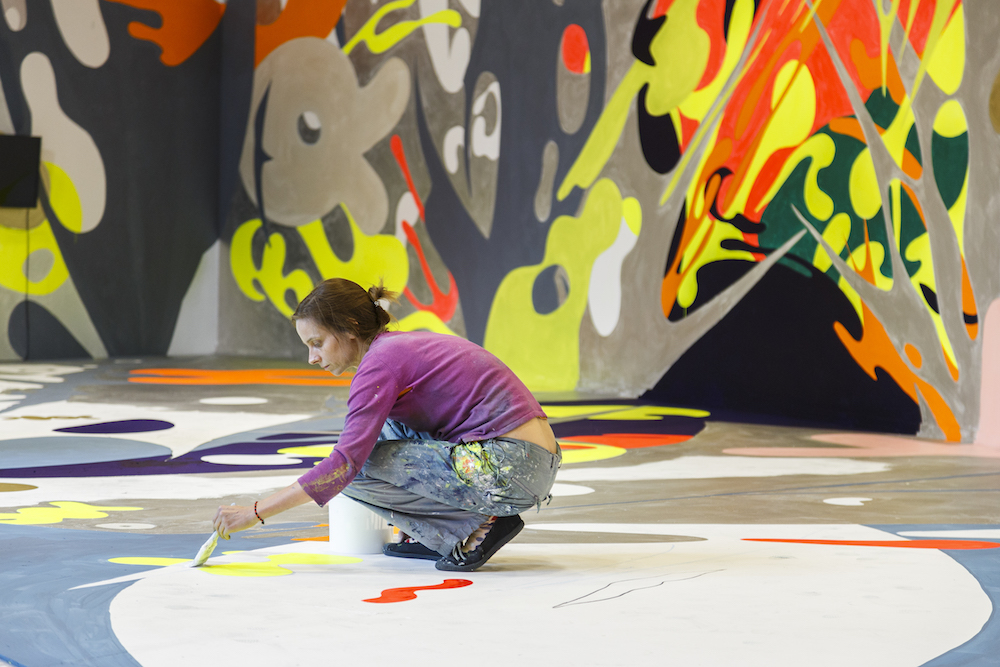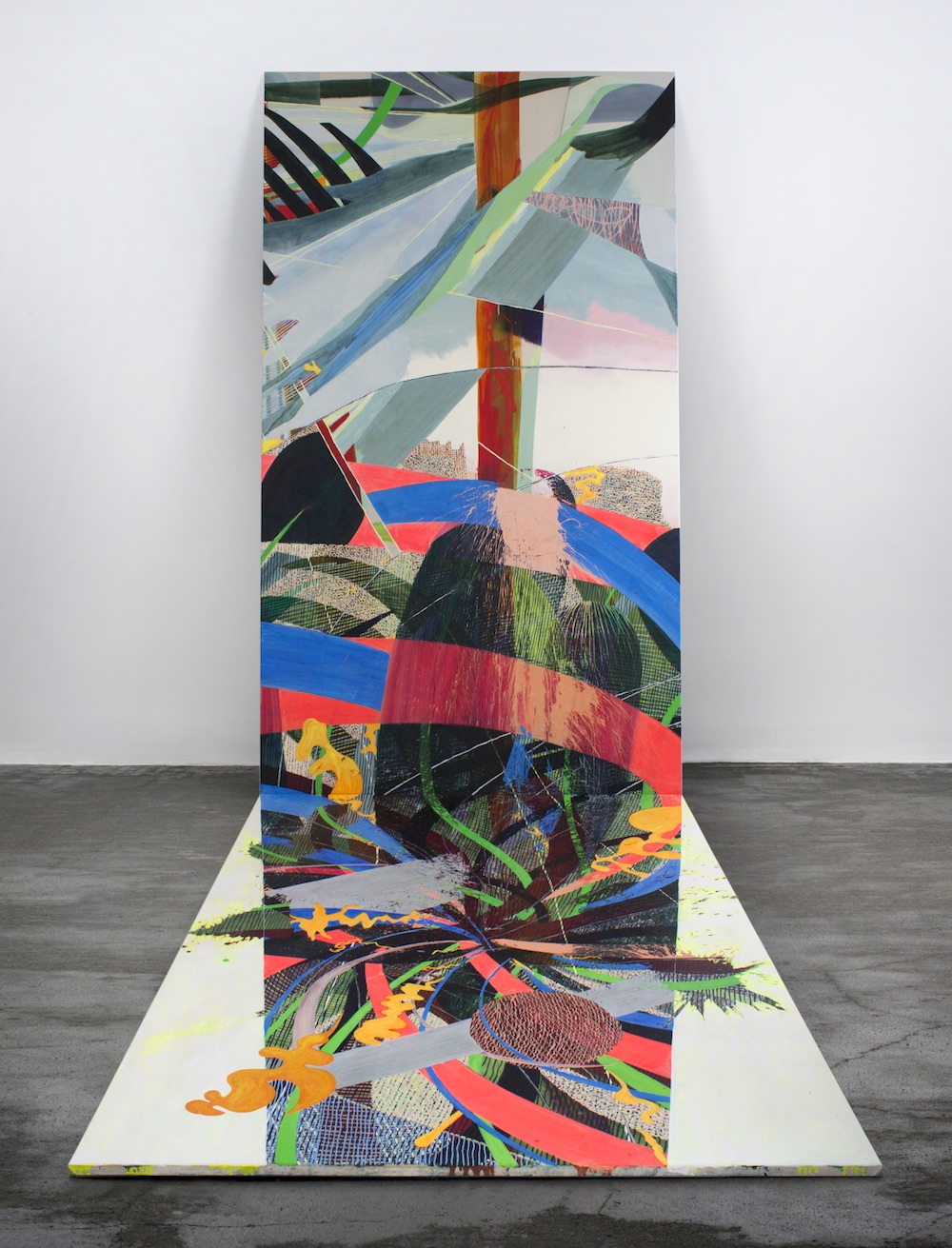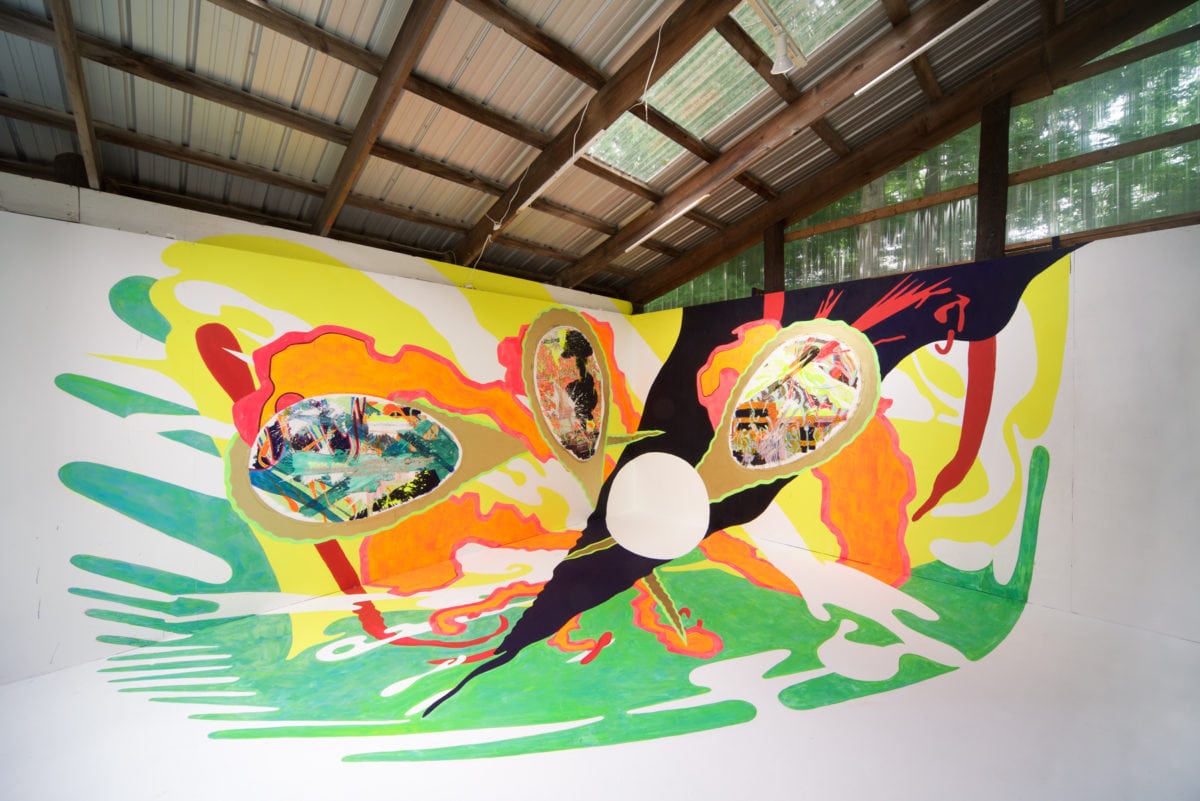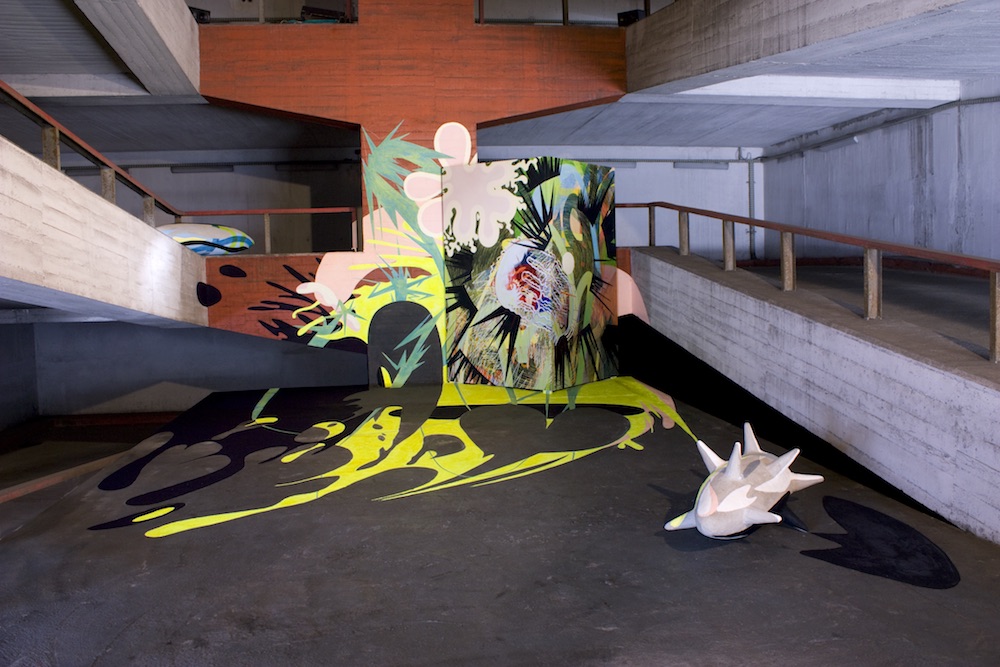
German artist Claudia Chaseling lives between Berlin and Canberra. Formally, her ostensibly abstract paintings burst with neon, fluorescent colour and blur the line between two- and three-dimensional perceptions of space. Chaseling’s works are also deeply political, referencing humanitarian crises that have resulted from the military use of nuclear weapons and depleted uranium. Upon close inspection, her shapes suggest the aerial view of military airfields, the wing of a plane, high-rise buildings, the vapour of a mushroom cloud or the violence of an explosion; there are even embedded YouTube links within the paintings that lead to political documentaries.

How do you approach painting as a practice?
Over the years I have invented a seemingly abstract style or system of painting. I call this work Spatial Painting—spatial in terms of actually reaching beyond the canvas, and also incorporating a political element that references specific sociopolitical issues. Spatial describes the physical aspect of the painting, expanding into the third dimension, reaching over walls, floors, ceilings, objects and even paintings on canvas that I place inside the painted space. I use space and perspective as a tool to change the atmosphere of a place. I like to reach a point where the space seems distorted, tipping out of balance, estranged or “infiltrated”. One characteristic of painting and drawing is its directness. There is no other medium that can so clearly imprint and connect the thought, action and movement of the artist. However, painting is also a slow medium. It takes a long time to make, clarify and think, which means it’s not necessarily a medium that is in line with today’s fast-paced reality. But it is a healthy medium. When humanity eventually blows its fuse because of the speed at which we move today, painting will be popular—for sanity’s sake.
- Future told me she has a headache, 2017. Art Omi, New York, USA
- Symbiosis Was Long Ago, 2012
Where do the internet links embedded within your painted surfaces lead?
My current work was initiated in 2005 after seeing a documentary by Frieder Wagner addressing the use of depleted uranium weapons. I then looked into the related research of Prof. Dr Siegwart Horst Günther. A number of my works, from the Spatial Paintings to the graphic novels, deal with the factual realities and consequences of how in every conflict zone in which NATO or the US are involved, weapons are used that contain and distribute long-term radioactivity in the form of uranium and plutonium dust. This has been the case since the first Gulf War in the early 1990s. So one link I use in my work leads to this important documentary that not enough people have seen. Media conflict and propaganda are another subject in my work. Always when I dig up crucial information I embed it into my work and make a painting out of it. Another link I used leads to an article about the upgrading of US atomic weapons in Germany. Sometimes I’ll also integrate the link to my graphic novel Murphy the Mutant within a work. Recently I started an archive of this information; images and drawings in relation to links and text fragments.

Can viewers walk on the floor within the Spatial Paintings themselves, integrating their own bodies within them?
I don’t see my work as being interactive as such. It is not a necessity to walk into the painting, but it is possible. Size is for me a deciding issue: the Spatial Painting needs to be larger than a human body, so the body gets immersed in the composition. This affect happens best from a distance. The appearance of the work is for me primary—this is when my concept can be perceived without disruption. The sensation of walking into the painting seems to me rather a curious discovery and I see it as secondary. One exception was my work Blender for the X-Border Art Biennial in Rovaniemi, Finland: this work measured 3 x 12 x 6 metres and I combined painting with two monitors showing videos of my graphic novel Murphy the Mutant. You needed to walk closely to the screen to watch the videos.
© Claudia Chaseling and VG Bild-Kunst Bonn







